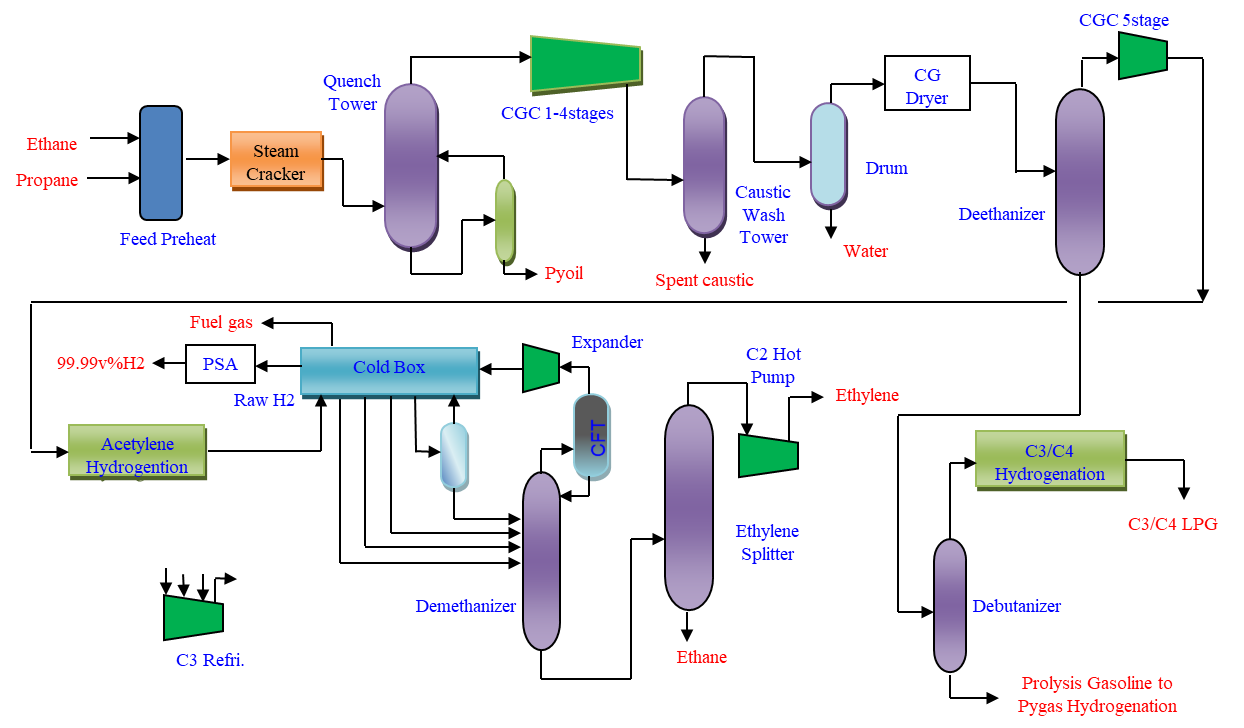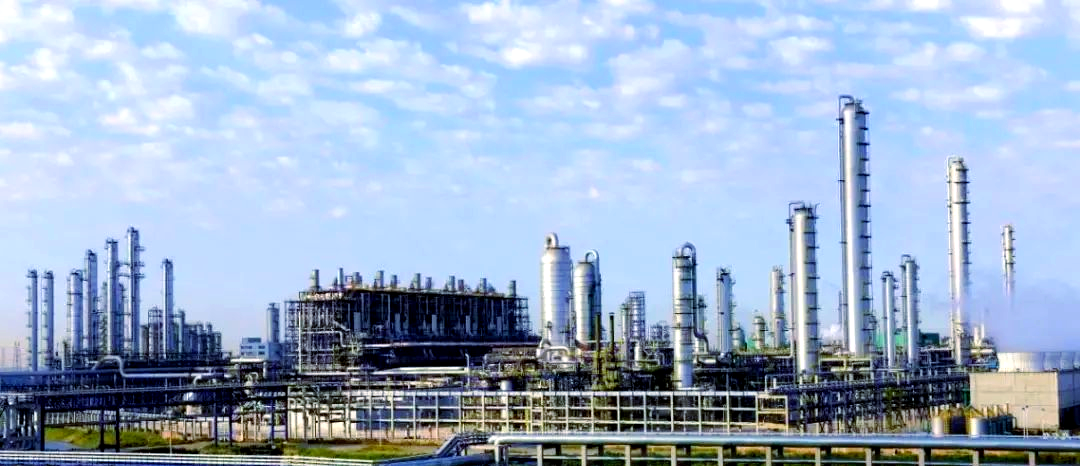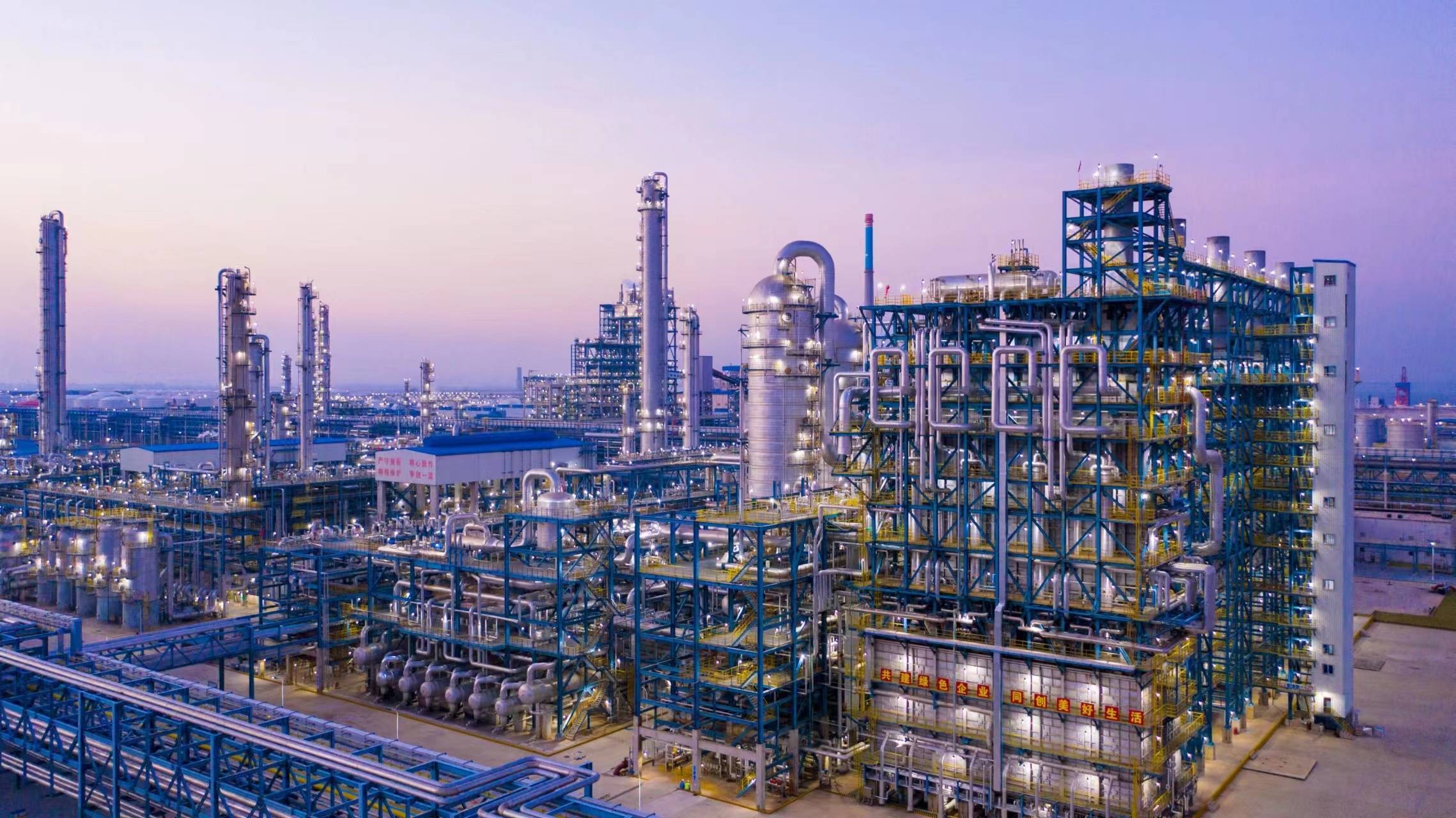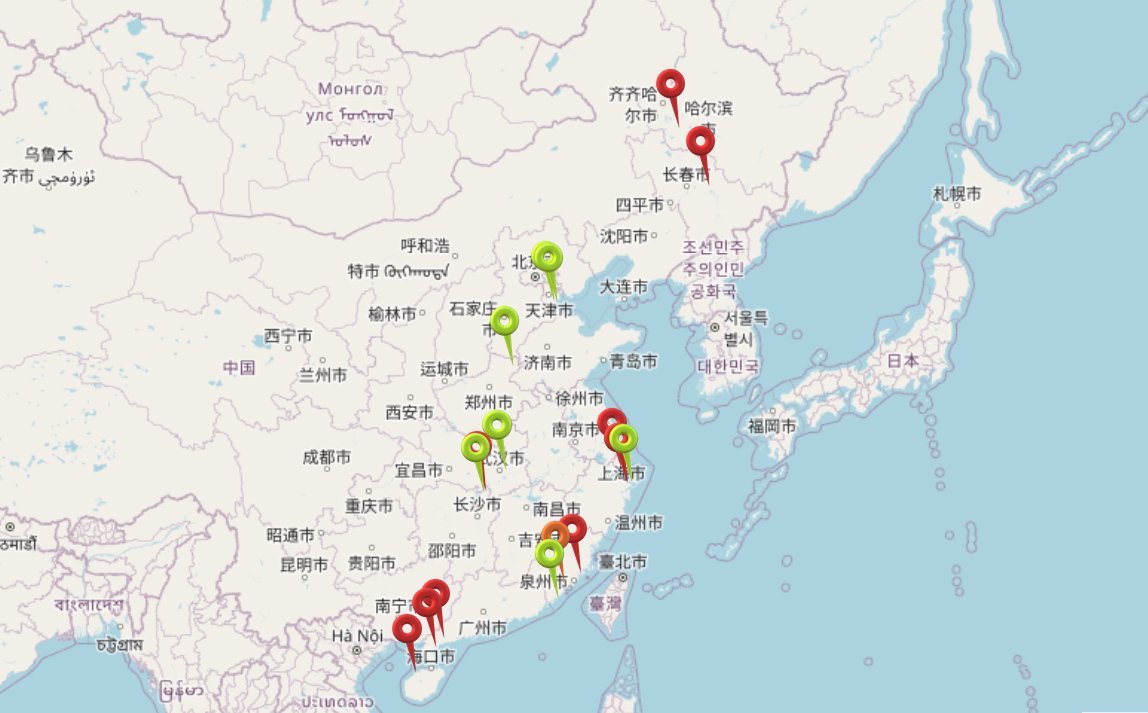Sinopec's Steam Cracker Technology Development: From Dependence to Global Leadership
- Technology
- SINOPEC CBL Steam Cracking
China Petroleum & Chemical Corporation (Sinopec) has achieved remarkable success in developing proprietary steam cracking technology over the past three decades, transforming from a technology importer to one of the world's few owners of complete ethylene production technology. This evolution has positioned Sinopec as a global leader in large-scale steam cracker design and operation, with technology achievements that now rival international standards.
Three Decades of Technological Innovation
Sinopec has dedicated more than 30 years to developing comprehensive ethylene production technology, culminating in the creation of its proprietary CBL (China-Based Large) cracker technology suite. This achievement places Sinopec among the select group of global technology licensors capable of offering complete million-tonne-scale ethylene packages.
The CBL technology demonstrates exceptional feedstock flexibility—a critical capability for Chinese market conditions—efficiently processing both light feedstocks (ethane, light hydrocarbons, naphtha) and heavy feeds (diesel, hydrocrackate) as well as unconventional high-olefin streams.
The complexity of ethylene cracking reactions presents significant technical challenges: over 10,000 simultaneous reactions occur at temperatures exceeding 800°C with residence times of approximately 0.2 seconds—nearly the time of a human blink. Unlike Western crackers that primarily process light hydrocarbons and naphtha, Chinese facilities must accommodate heavier variations of feedstock due to limited domestic light hydrocarbon resources, demanding greater feedstock adaptability from cracker designs.

SINOPEC's CBL Steam Cracking Technology PFD
Major Technological Breakthroughs in 2021
Early 2021 marked a pivotal period for Sinopec's cracker technology scale-up achievements, with three landmark furnace startups demonstrating the maturity and versatility of CBL
technology:
Sinopec-SABIC Tianjin (SSTPC) successfully commissioned a new 200,000 tonne/year (t/y) ethylene production capacity cracking furnace using the CBL-IX design as part of its 1.3 million tonne/year ethylene expansion project. This liquid feedstock furnace, processing primarily naphtha, became China's first 200,000-tonne-class liquid cracker using domestic technology, embodying results from the National Science and Technology Support Program's "200,000 t/y large cracker" initiative.

Photo: General view of the 1.3 million t/y Steam Cracker of SSTPC in Tianjin Municipality | Credit: Baidu Baijiahao (Mar 26, 2025)
Zhongke Refining & Petrochemical achieved first-time startup success of a 300,000 t/y ethylene production capacity cracking furnace—the world's largest single-furnace ethylene production capacity. This CBL-R design processes gas feedstocks including ethane (maximum 300,000 t/y ethylene capacity), LPG (250,000 t/y ethylene capacity), and naphtha (200,000 t/y ethylene capacity), representing China's first application of proprietary 300,000-tonne-class gas cracker technology.

Photo: General view of the 800,000-t/y CBL cracking technology unit of Sinopec Zhongke Refining & Chemical Co., Ltd. in Guangdong | Credit: Sohu (Dec 30, 2022)
Sinopec-SK Wuhan's 200,000 t/y ethylene production capacity cracking furnace met handover standards as part of its 1.1 million t/y ethylene debottlenecking project. This CBL furnace processes heavy liquid feedstocks including naphtha, hydrocrackate, and diesel, showcasing advanced capability for heavy feed cracking with domestic technology.

Photo: Sinopec-SK completed expansion of ethylene facility | Credit: SKinno News (Apr 4, 204)
Advanced Design Features and Environmental Performance
All three milestone crackers incorporate cutting-edge engineering developed collaboratively by Sinopec Engineering Group, Beijing Research Institute of Chemical Industry, and Tianhua Institute (Nanjing) Engineering Company. Key design innovations include:
- Dual-chamber, single-convection section structure with full bottom-fired heating
- Large-radius bottom bend tubes configured with dumbbell-shaped quench exchangers
- Independent chamber operation allowing separate cracking and decoking by chamber
- Low-NOx combustion technology reducing nitrogen oxide emissions
- High domestication rates with indigenous quench exchangers and burners
These features deliver operational flexibility, high online availability, low emissions, and technical-economic performance reaching international leading levels. The successful deployment establishes the foundation for 1.5 million t/y and larger ethylene complexes, providing robust support for Sinopec's technology to compete globally.
Comprehensive Portfolio of Million-Tonne Ethylene Facilities
Sinopec has systematically developed an impressive portfolio of large-scale ethylene complexes, demonstrating both technological mastery and strategic geographical coverage:
| Producer / Complex | Location | Name & JV Structure |
Capacity Mt/Year |
|---|---|---|---|
| ZRCC | Ningbo, Zhejiang | SINOPEC Zhenhai Refining & Chemical Company (ZRCC) | 2.2–2.5 |
| Sinopec- SABIC |
Tianjin (Municipality) |
Sinopec-SABIC Tianjin Petrochemical Co., Ltd. (SSTPC, JV: Sinopec/SABIC) | 1.3 |
| Sinopec- SK Wuhan |
Wuhan, Hubei |
Sinopec-SK Wuhan Petrochemical Co., Ltd. (JV: Sinopec/SK Geo Centric) | 1.1 |
| Shanghai SECCO |
Shanghai (Municipality) |
Shanghai SECCO Petrochemical Co., Ltd. (JV: BP 50%, Sinopec 30%, SPC 20%) | 1.14 |
| Fujian Refining & Petrochemical | Fuqing, Fujian |
Fujian Refining & Petrochemical Co., Ltd. (FREP, JV: Sinopec 50%, ExxonMobil 25%, Aramco 25%) | 1.1 |
| Maoming Petrochemical | Maoming, Guangdong | SINOPEC Maoming Refining & Chemical Co., Ltd. | 1.0 |
| Hainan Refining Petrochemical |
Yangpu, Hainan | Sinopec Hainan Refining & Chemical Co., Ltd. | 1.0 |
| Fujian Gulei Petrochemical | Zhangzhou, Fujian | Fujian Gulei Petrochemical Co., Ltd. (JV: Sinopec, local partner) | 0.8–1.0 |
| Zhonke Refining & Petrochemical |
Guangdong, Zhanjiang |
ZhongKe (Guangdong) Refinery & Petrochemical Company Limited | 0.8 |
| Qilu Petrochemical |
Zibo, Shandong | SINOPEC Qilu Petrochemical Co., Ltd. |
0.8 |
| Yangzi Petrochemical | Nanjing, Jiangsu | Yangzi Petrochemical Co., Ltd. (JV: Sinopec/BASF) |
0.8 |
These world-scale facilities have driven significant regional economic development. The Zhenhai (ZRCC) complex alone generates over 100 billion yuan in annual regional economic value. Sinopec's ethylene assets collectively drive downstream industries worth hundreds of billions of yuan annually, creating complete petrochemical value chains and establishing China as a petrochemical manufacturing powerhouse.
China's Ethylene Production Capacity and Sinopec's Position
- By the end of 2016, there were 125 CBL-based cracking furnaces in operation worldwide, with a total ethylene production capacity of 12.21 million tons.
- By the end of 2020, China's total ethylene capacity reached 35.18 million t/y, ranking second globally. Sinopec operated 12.55 million t/y of ethylene capacity, making it the world's fourth-largest ethylene producer.
- By 2023, China's ethylene capacity exceeded 50 million t/y, with approximately 6 million t/y of new capacity additions. Sinopec's 2023 ethylene output reached 14.31 million tonnes, with 11 facilities possessing million-tonne-scale production capability (Table).
- By the end of 2024, over 264 new and retrofitted cracking furnaces will have been installed using CBL cracking technology, with total ethylene production capacity exceeding 33.8 million t/y.

CBL Cracking Technology map (captured: Nov 1, 2025)
Technology Industrialization and National Self-Reliance
Sinopec's technology development exemplifies China's strategic push toward self-reliance in critical industrial technologies.
The corporation's ethylene projects have achieved equipment domestication rates reaching 96%, 100% independent control of key core equipment with major components including cracking furnaces, compressors, cold boxes, and catalysts all produced domestically, and technical indicators such as comprehensive energy consumption complying with advanced domestic standards. This technological independence reduces foreign technology licensing costs, accelerates project delivery, and strengthens China's industrial sovereignty.
The CBL technology family continues evolving with increasing scale, enhanced series offerings, and improved environmental performance, with plant's environmental design indicators exceeding national standards across the board.
Modular and standardized design practices enable faster deployment and consistent performance across sites, positioning Sinopec to support China's growing petrochemical demand while potentially licensing technology internationally.
Representing the latest technological evolution of SINOPEC's steam cracking capabilities, by December 2024, Sinopec brought online at Zhongke Refining the world's first digital twin intelligent ethylene plant, achieving breakthroughs in domestically-developed industrial software that replaced foreign cracking reaction models (saving over RMB 500,000/year in licensing fees), improved diolefin yield by 0.315 percentage points, reduced DCS operator workload by 60%, achieved over 90% accuracy in equipment fault early warning, cut waste alkali discharge by 19%, and established China's capability for autonomous intelligent ethylene manufacturing at international leading levels.

SINOPEC's Steam Cracking Technology Recovery Section PFD
Conclusion
Sinopec's transition from technology recipient to independent technology provider reflects China's broader strategic drive toward industrial self-sufficiency in critical petrochemical sectors. Through sustained R&D investment, systematic scale-up programs, and strategic demonstration projects over three decades, Sinopec has developed proprietary million-tonne ethylene technology that reduces dependence on foreign licensing while meeting international performance standards. Operating 14.31 million tons of annual ethylene production capacity across 11 major facilities, Sinopec has established technological autonomy in steam cracking—a capability previously concentrated among a handful of Western firms. This indigenization of core ethylene technology enhances China's supply chain security, reduces vulnerability to technology restrictions, and positions domestic engineering contractors to compete for international projects. The development of large-scale cracker design capabilities, feedstock flexibility to accommodate China's resource constraints, and integration with digital manufacturing platforms provides Sinopec with strategic advantages as global petrochemical production shifts toward more complex feedstocks and stricter environmental requirements. Whether this technology independence translates into sustained global competitiveness will depend on continued innovation, operational excellence, and the ability to license technology internationally in an increasingly fragmented global market.
References
- Fu Hui. Sinopec (Jan 2020). Sinopec Achieves New Breakthrough in Large-Scale Ethylene Cracking Furnaces
- Fu Hui and Yan Pinghui. Sinopec (Nov 2020). A Record of the First Prize of the National Science and Technology Progress Award: Sinopec's Million-Ton-Level Ethylene Complete Technology
- Shandong Shenchi Chemical Group Co., Ltd. (Jan 15, 2021). Sinopec Achieves New Breakthrough in Large-Scale Ethylene Cracking Furnaces
- Chlor-Alkali Online (Feb 28, 2024). Summary of production enterprises of Sinopec's million-ton-level ethylene project
- Baidu Baijiahao (Sep 4, 2025). 1.2 million ton/year ethylene plant successfully started up on first attempt!
- Xinhua News Agency (Mar 19, 2025). The world's first digital twin intelligent ethylene plant is now online and operational
- Liaoning Petrochemical Group (Sep 16, 2025). China's completely independent intellectual property ethylene cracking technology successfully applied
- He Xiou, Liu Gang and Li Changli. Digital Refining (Dec 20, 2023). Introduction to Sinopec Steam Cracking Technology.






